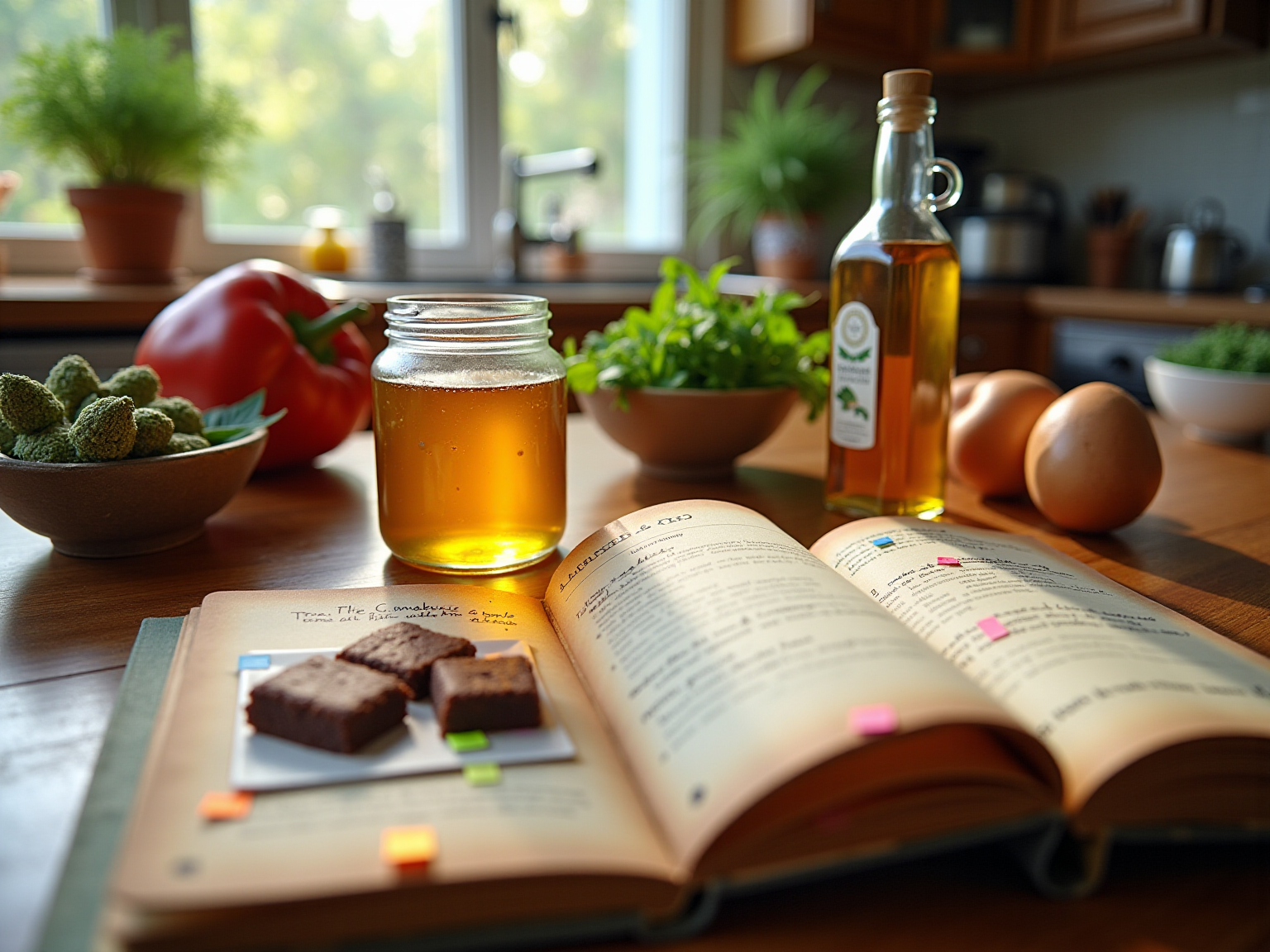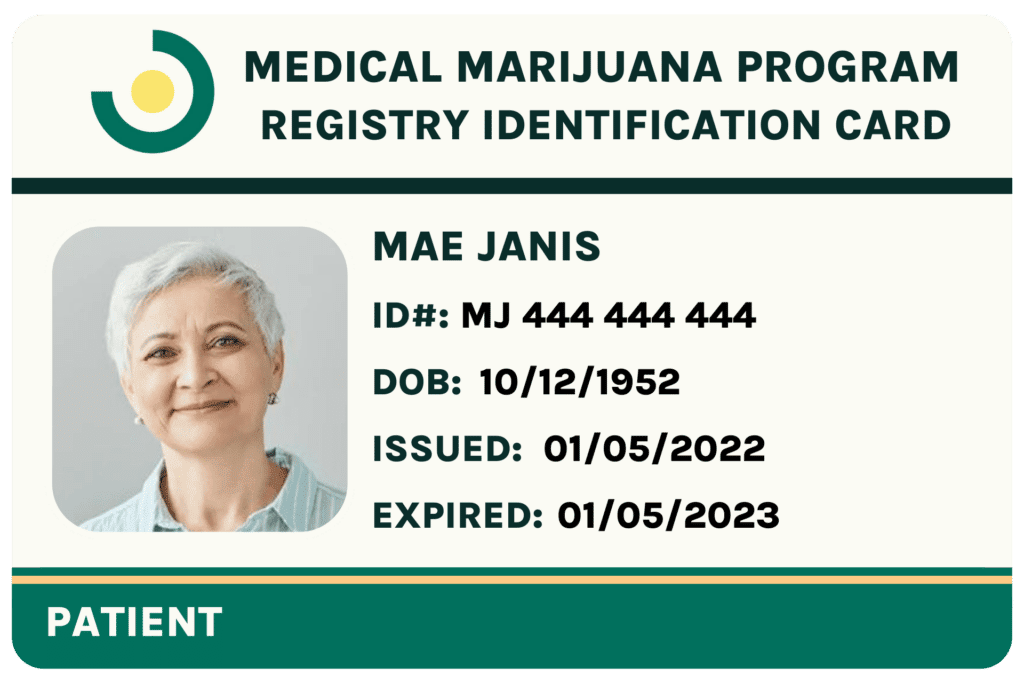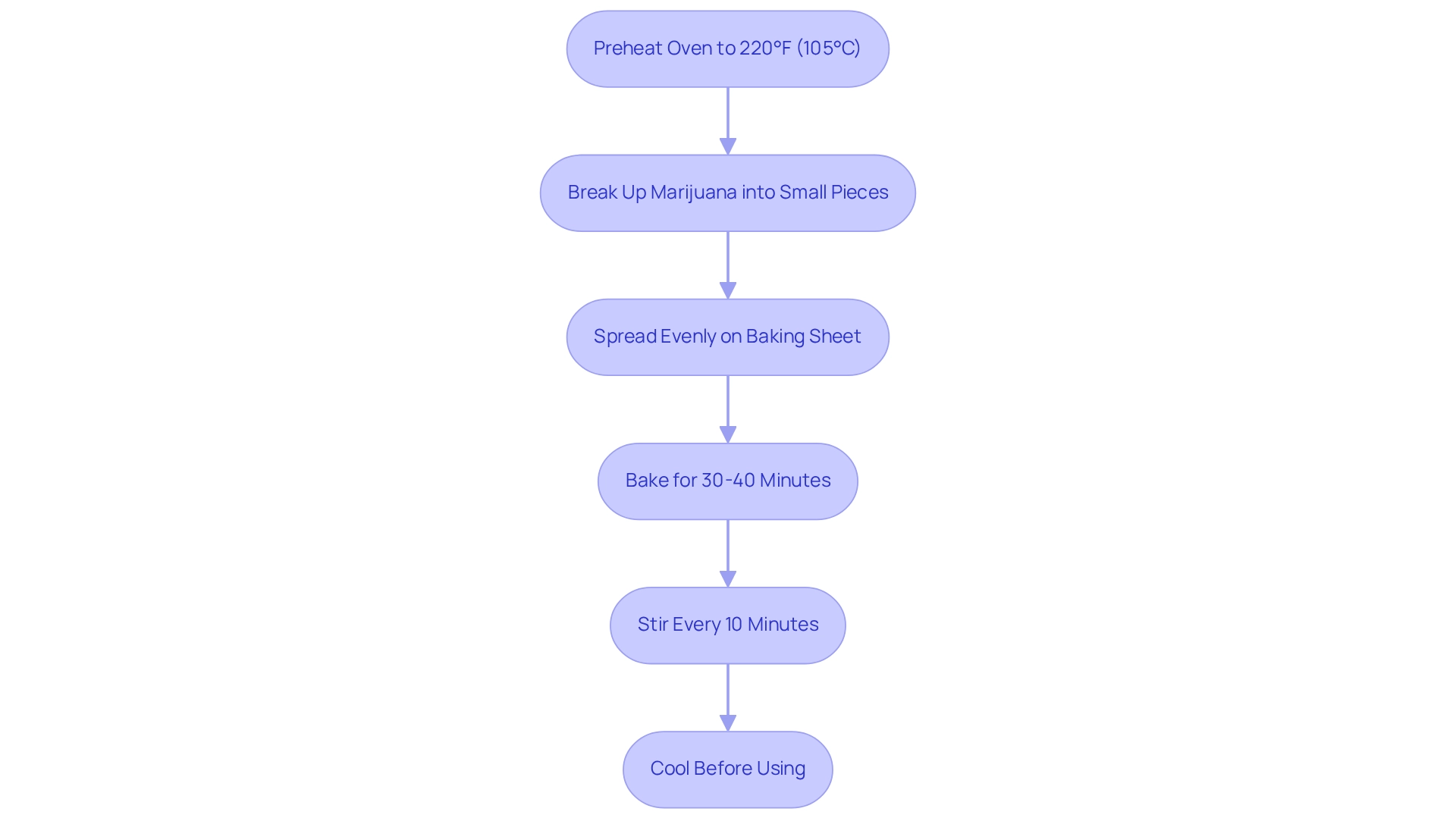Cooking with Cannabis: Essential Techniques for Beginners
by Maya Green · May 6, 2025
Discover essential techniques for cooking with cannabis, from strain selection to delicious recipes.

Overview
Cooking with cannabis can be a rewarding journey, but it often comes with its own set of challenges. Understanding the different strains and their effects is crucial, as is mastering techniques like decarboxylation. It’s important to remember that accurately calculating dosages ensures safe consumption, allowing you to enjoy the experience fully.
By familiarizing yourself with the characteristics of various cannabis types and following precise preparation methods, you can create effective and enjoyable cannabis-infused dishes tailored to your personal preferences and therapeutic needs. You may find that this knowledge not only enhances your cooking but also empowers you to explore new flavors and effects.
As you embark on this culinary adventure, know that you are not alone. Many beginners share the same concerns and questions. Take your time, experiment with different strains, and don’t hesitate to seek guidance when needed. With patience and practice, you will discover the joy of cooking with cannabis, making meals that nourish both body and spirit.
Introduction
As the culinary world embraces the versatility of cannabis, many home cooks are discovering the art of infusing this unique ingredient into their favorite recipes. With a growing interest in the therapeutic benefits of cannabis, it’s important to understand the different strains and their effects, as this knowledge becomes essential for creating delicious and effective dishes.
From mastering the decarboxylation process to calculating dosages for safe consumption, this guide delves into the essentials of cannabis cooking. It offers practical tips for crafting infused oils, butters, and honey, alongside easy-to-follow recipes that promise to elevate any meal.
Whether you are seeking relaxation, pain relief, or simply a new culinary adventure, this exploration of cannabis cooking opens the door to a flavorful and potentially therapeutic experience.
Understand Cannabis Basics for Cooking
Marijuana is available in various varieties, primarily classified into Indica, Sativa, and Hybrid, each offering unique characteristics that can influence culinary results.
- Indica: Known for its soothing properties, Indica varieties are often preferred for evening use. This makes them ideal for dishes intended to promote relaxation and sleep, particularly when cooking with cannabis to help you unwind after a long day.
- Sativa: These varieties are recognized for their uplifting and energizing properties, making them suitable for daytime meal preparation. They can be particularly beneficial in recipes for cooking with cannabis that are designed to enhance mood and creativity, allowing you to embrace your culinary adventures.
- Hybrid: Combining elements of both Indica and Sativa, Hybrid varieties provide a balanced outcome. This versatility allows for diverse culinary applications, depending on the results you wish to achieve.
Understanding cannabinoids is crucial when it comes to cooking with cannabis. THC (tetrahydrocannabinol) is the psychoactive component that produces the ‘high,’ while CBD (cannabidiol) is non-psychoactive and often utilized for its therapeutic benefits. It’s important to adapt your cooking with cannabis to the cannabinoid profile of your selected strain, as this can assist in attaining particular effects, whether for relaxation, pain relief, or other therapeutic purposes.
Including components like dark chocolate can enhance your experience due to its content of anandamide, a neurotransmitter that may amplify the effects of marijuana. By consuming dark chocolate before marijuana, you can elevate anandamide levels, stimulating cannabinoid receptors for a more profound experience. Additionally, cooking with cannabis allows for the creation of marijuana-infused honey, a versatile ingredient that can be easily made using methods like the slow cooker or double boiler. Understanding the potency of your marijuana honey is essential for safe dosing, especially for those managing chronic pain. The potency of cooking with cannabis depends on the THC or CBD concentration, so measuring accurately is crucial for effective use. It is wise to begin with a low dosage and progressively raise it to determine the ideal quantity for your needs, ensuring a secure and beneficial experience.
Recent trends show that many users are becoming more selective about product choices for cooking with cannabis. A report emphasized that 42% of regular marijuana buyers investigate product outcomes online before making purchases, highlighting the significance of available information for informed culinary decisions. Furthermore, professional viewpoints indicate that grasping the distinct influences of various varieties can improve culinary experiences in cooking with cannabis, enabling chefs to craft dishes that correspond with the intended outcomes.
The increasing interest in marijuana is further evidenced by U.S. adult-use and medical marijuana sales, which grew by $2.6 billion (9.14%) year-over-year, totaling $31.4 billion in 2024. This indicates a robust market for cooking with cannabis in culinary practices. As cooking with cannabis continues to evolve, keeping up with the latest developments in strain effects and cannabinoid profiles will empower you to craft delicious and effective THC-infused dishes. Remember, your journey into cooking with cannabis can be both enjoyable and rewarding, so take your time and explore the possibilities.
Master the Decarboxylation Process
To effectively decarboxylate marijuana, it’s important to follow these steps with care:
- Preheat your oven to 220°F (105°C). This temperature is optimal for preserving cannabinoid stability during the decarboxylation process, which is essential for activating THCA into THC, unlocking its therapeutic benefits.
- Break up the marijuana into small pieces and spread them evenly on a baking sheet lined with parchment paper. This ensures even heat distribution, crucial for effective decarboxylation.
- Bake for 30-40 minutes, stirring every 10 minutes to promote uniform heating. You’ll know it’s ready when the plant material develops a light brown hue and becomes dry, indicating successful decarboxylation. Allow the herb to cool before using it in your cooking with cannabis recipes. This process transforms THCA, the non-psychoactive compound, into THC, which is essential for the desired effects in cooking with cannabis. Understanding the importance of decarboxylation is vital for maximizing the potency of THC and CBD in your edibles. You may find that incorporating hemp honey serves as a versatile ingredient in your cooking. It can replace traditional sweeteners, allowing for easy infusion into various recipes. When cooking with cannabis, consider adding cannabis-infused honey into baked goods such as muffins, cookies, and cakes, or drizzle it over roasted vegetables and mix it into marinades for a depth of flavor. This herbal honey can also enhance dressings and sauces, balancing sweetness with botanical notes, enriching both sweet and savory dishes.
Research indicates that maintaining proper storage conditions is crucial for preserving the quality of cannabinoids. For instance, storing marijuana at 22 °C with light can significantly degrade its quality compared to keeping it in darkness at 4 °C. A study on decarboxylation kinetics revealed that lowering storage temperatures by just 5 °C could double the shelf life of cannabinoids. This underscores the importance of temperature control throughout the process. Remember, taking these steps can help you enjoy the full benefits of your cannabis creations.
Calculate Dosages and Potency for Safe Consumption
To accurately calculate dosages for cannabis-infused recipes, it’s essential to follow these steps with care:
- Begin by determining the THC level of your marijuana variety. For example, if your strain has a THC concentration of 20%, then 1 gram contains 200 mg of THC.
- Next, decide on the amount of marijuana to incorporate into your recipe. Using 5 grams would yield a total of 1000 mg of THC.
- It’s important to divide the total THC by the number of servings your recipe produces. If your dish serves 10, each serving would contain 100 mg of THC. Remember to adjust this amount according to your personal tolerance and desired effects. It’s wise to start with a lower dosage and progressively raise it, especially if you are new to edibles.
Understanding the typical THC levels in marijuana varieties as of 2025 can also assist in your calculations. Many popular strains now average around 15-25% THC, which can significantly influence your cooking outcomes. Additionally, the potency of hemp olive oil is crucial; its strength depends on the type of herb used and the quality of the olive oil. Extra virgin olive oil is recommended for its healthy fats and rich flavor, which can enhance your recipes when cooking with cannabis. Real-world examples show that precise dosage calculations can truly enhance your culinary experience while ensuring safety and effectiveness, particularly for patients managing chronic pain or other qualifying conditions. Consulting with healthcare professionals, such as those available through Leafy DOC, can provide valuable guidance in navigating these calculations and ensuring safe consumption. Always prioritize your safety and consult with healthcare professionals if you feel uncertain about dosages.
Create Infused Oils and Butters for Cooking
Cooking with cannabis by creating cannabis-infused butter, commonly known as cannabutter, can be a rewarding experience. To get started, gather:
- 1 cup of unsalted butter
- 1 cup of water
- Your decarboxylated cannabis
Begin by melting the butter. In a saucepan, combine the butter and water over low heat until it’s fully melted. This step is crucial for a smooth infusion. Next, stir in the decarboxylated cannabis and let it simmer on low heat for 2-3 hours. Remember to stir occasionally to ensure an even infusion; this is where the magic happens.
Once simmering is complete, filter the mixture through a cheesecloth into a container, discarding the leftover plant material. Allow it to cool and solidify in the refrigerator, and soon you’ll have your very own cannabutter.
If you’re interested in making cannabis-infused honey, the process is just as simple. Gather:
- 1 cup of honey
- Your decarboxylated cannabis
In a double boiler, combine the honey and cannabis, heating the mixture on low for 2-3 hours. Stir occasionally to ensure even infusion, but avoid boiling to preserve the honey’s wonderful properties. After infusion, strain the mixture through a cheesecloth into a clean container, discarding the plant material. Allow it to cool before sealing.
For cannabis-infused oil, you can use the same method as for butter, simply substituting the butter with your choice of oil, such as olive oil or coconut oil. Both are excellent for infusion and can enhance your culinary creations, particularly in cooking with cannabis, as cannabis-infused oils, butters, and honey are becoming increasingly popular with many home cooks exploring their culinary potential.
You may find it interesting that 29 percent of adults report reading product labels when trying new food items, indicating a growing interest in understanding marijuana preparation. This awareness highlights the importance of precise dosing and flavor balance when cooking with cannabis-infused oils, butters, and honey, ensuring that your final dishes are both enjoyable and effective.
As Dr. Jenny L. Wiley, a respected authority in behavioral pharmacology, emphasizes, understanding dosing is essential for optimizing the therapeutic benefits of cooking with cannabis. Consider the variety you choose; whether you prefer a THC-dominant strain for psychoactive effects or a CBD-dominant strain for non-intoxicating benefits, the choice is yours. Additionally, the flavor profile of the strain can enhance your dishes, offering options that range from citrusy to earthy notes when cooking with cannabis, with an average preparation time of about 3-4 hours, including the infusion process.
Expert tips suggest maintaining low temperatures during infusion to preserve the cannabinoids and terpenes, which contribute to both the therapeutic effects and flavor profile of your final product. This meticulous approach not only improves the quality of your infused oils, butters, and honey, but also ensures a more pleasurable culinary experience when it comes to cooking with cannabis. Real-life examples of cooking with cannabis techniques showcase the versatility of these ingredients, allowing for a range of dishes from savory to sweet. As you embark on your culinary adventure with marijuana, remember to start with small doses and adjust according to your preferences. Enjoy the journey!
Explore Delicious Cannabis Recipes
For those unfamiliar with cooking with cannabis, here are some simple and tasty recipes to begin your culinary journey.
- Cannabis-Infused Brownies: Incorporate your homemade cannabutter into a classic brownie mix for a rich, indulgent treat that’s perfect for satisfying your sweet tooth while potentially alleviating chronic pain.
- Cannabis-Infused Olive Oil Pasta: Elevate your pasta dishes by tossing cooked noodles with cannabis-infused olive oil, garlic, and fresh herbs, creating a simple yet flavorful meal that may also help manage anxiety.
- Cannabis-Infused Salad Dressing: Combine cannabis-infused oil with vinegar, mustard, and herbs to craft a unique dressing that adds a delightful twist to your salads, offering potential health benefits.
Cooking with cannabis, you can blend your favorite fruits with oil infused with the plant to create refreshing and nutritious smoothies that are easy to customize, perfect for those seeking relief from anxiety and depression. These recipes highlight the versatility of the plant in the kitchen, allowing for personalization based on dietary preferences.
As enthusiasm for cooking with cannabis increases, it’s important to recognize the growing trend in recipe exchange, with numerous newcomers eager to explore the culinary potential of this ingredient. Notably, cooking with cannabis is increasingly popular among those seeking relief from chronic pain, showcasing the plant’s potential benefits in everyday recipes.
Furthermore, marijuana has been demonstrated to effectively alleviate anxiety and depression symptoms, especially in individuals with PTSD, which may resonate with chronic pain patients seeking therapeutic options. In addition to these benefits, medical marijuana has neuroprotective properties that can support cognitive health and anticonvulsant effects that may help those with epilepsy.
However, it’s essential to remain aware of the potential mental health risks associated with marijuana use, as highlighted by studies indicating an increased likelihood of psychosis in healthy individuals. Comprehending these elements can assist chronic pain sufferers in making educated choices about integrating marijuana into their meals.
Explore these recipes and discover how cooking with cannabis can enhance your culinary experience while potentially providing therapeutic benefits. Your journey into cannabis cooking could lead to delicious meals and improved well-being!
Conclusion
Embarking on a journey into cannabis cooking opens up a wonderful opportunity to merge your culinary creativity with the therapeutic benefits of this versatile ingredient. It’s important to understand the different cannabis strains—Indica, Sativa, and Hybrid—and their unique effects. This knowledge is crucial for crafting dishes that cater to specific needs, whether you’re seeking relaxation, upliftment, or a balanced experience.
Mastering the decarboxylation process and accurately calculating dosages will empower you to harness the potency of infused oils, butters, and honey effectively, allowing for safe and enjoyable consumption.
The practical steps for making cannabis-infused products, along with simple recipes to get you started, can inspire you to experiment confidently in the kitchen. From rich cannabis-infused brownies to refreshing smoothies, these dishes not only bring culinary delight but also offer the potential for therapeutic outcomes.
As your interest in cannabis cooking grows, staying informed about the latest trends and best practices is essential, ensuring that your culinary experiences remain both enjoyable and responsible.
Ultimately, embracing cannabis in your kitchen opens the door to a flavorful adventure that can enhance both your meals and your well-being. By beginning with low doses and gradually adjusting to your personal preferences, you can explore the rich possibilities of cannabis-infused cuisine, transforming everyday cooking into a therapeutic and delicious journey.
Remember, this is not just about food; it’s about nurturing yourself and those around you through the joy of cooking.
Frequently Asked Questions
What are the main varieties of marijuana used in cooking?
The main varieties of marijuana used in cooking are Indica, Sativa, and Hybrid. Indica is known for its soothing properties and is often preferred for evening use. Sativa is uplifting and energizing, making it suitable for daytime cooking. Hybrid combines elements of both Indica and Sativa, offering versatility for various culinary applications.
How does Indica affect culinary results?
Indica varieties are known for their soothing properties, making them ideal for dishes intended to promote relaxation and sleep. They are often used in recipes aimed at helping individuals unwind after a long day.
What is the effect of Sativa in cooking?
Sativa varieties are recognized for their uplifting and energizing properties, which make them suitable for daytime meal preparation. They can enhance mood and creativity, allowing for more adventurous culinary experiences.
What is the significance of understanding cannabinoids when cooking with cannabis?
Understanding cannabinoids is crucial because THC is the psychoactive component that produces the ‘high,’ while CBD is non-psychoactive and often used for therapeutic benefits. Adapting cooking to the cannabinoid profile of the selected strain can assist in achieving specific effects, such as relaxation or pain relief.
How can dark chocolate enhance the experience of cooking with cannabis?
Dark chocolate contains anandamide, a neurotransmitter that may amplify the effects of marijuana. Consuming dark chocolate before marijuana can elevate anandamide levels, stimulating cannabinoid receptors for a more profound experience.
What is marijuana-infused honey and how can it be used in cooking?
Marijuana-infused honey is a versatile ingredient that can be made using methods like a slow cooker or double boiler. It can easily be incorporated into various recipes, such as baked goods, marinades, and dressings, adding both sweetness and botanical notes.
Why is it important to measure the potency of marijuana when cooking?
The potency of cooking with cannabis depends on the THC or CBD concentration, making accurate measurement crucial for effective use. It is wise to start with a low dosage and gradually increase it to determine the ideal quantity for individual needs.
What trends are emerging in the market for cooking with cannabis?
Many users are becoming more selective about product choices for cooking with cannabis, with a significant percentage investigating product outcomes online before purchasing. This trend highlights the importance of available information for making informed culinary decisions.
What is the process for decarboxylating marijuana?
To decarboxylate marijuana, preheat the oven to 220°F (105°C), break up the marijuana into small pieces, spread it on a baking sheet, and bake for 30-40 minutes, stirring every 10 minutes. The herb is ready when it develops a light brown hue and becomes dry.
How does proper storage affect the quality of cannabinoids?
Proper storage conditions are crucial for preserving cannabinoid quality. Storing marijuana at lower temperatures and in darkness can significantly extend its shelf life, maintaining potency and effectiveness for cooking.
Last Updated: July 4, 2025
Get Approved for Your Medical Marijuana Card in Minutes!

Get Your Medical Card
Connect with a licensed physician online in minutes

Like This Article?
Share with your friends
Table of Contents
Keep Reading
-
5 Steps to Get the Cheapest Medical Marijuanas Card Online Florida
Discover how to obtain the cheapest medical marijuana card online in Florida with ease.
-
The Battle for Marijuana Legalization in Oklahoma: Why Voters Ultimately Said ‘No’
Last week, 63 percent of Oklahoma voters said no to a proposal that would have allowed recreational marijuana use for people over 21. This means that the recreational use of marijuana is still not legal in Oklahoma, even though the state has already approved over 2,800 medical marijuana licenses and has more than 400 dispensaries…
-
4 Steps to Get Your Marijuana Card in Florida Easily
Learn how to easily obtain your marijuana card in Florida with our step-by-step guide.





